Tonight I found time for 'breathing out' at tumblr after a most intense two days becoming familiar with a new laptop ... ironing out issues that resulted in a hour long conversation with AppleCare.
Tumblr is great for when you feel short on energy but want to quietly peruse some visual ideas.
 |
| Mari Andrews Studio |
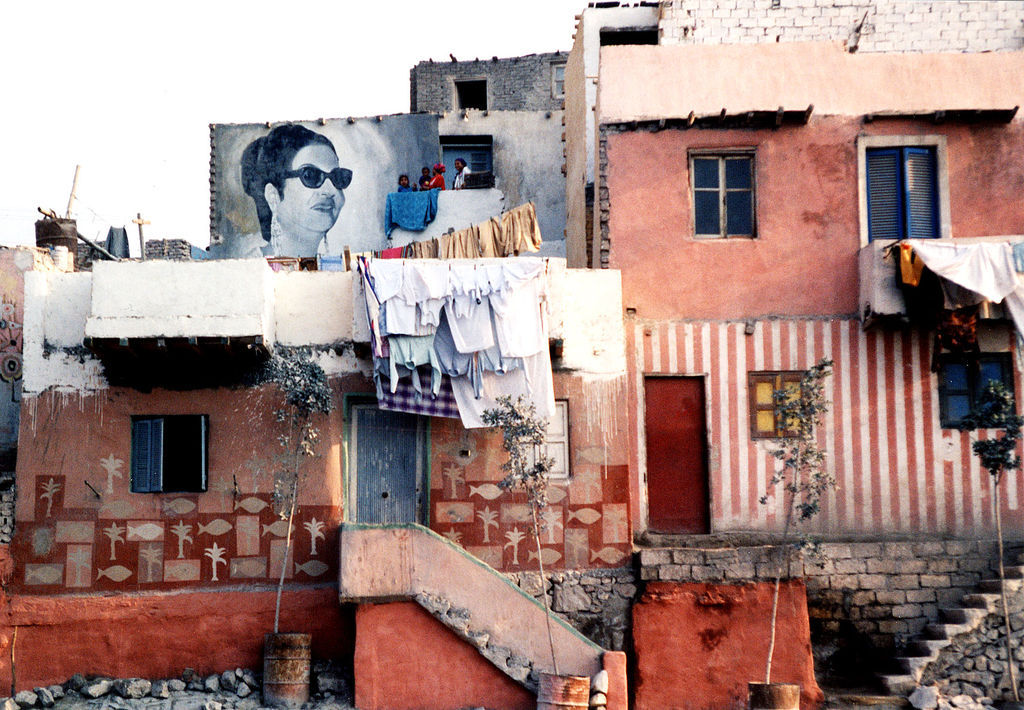 |
| http://indigenousdialogues.tumblr.com/post/48684115192/umm-kalthoum-overlooking-a-cairo-slum-egypt |
Can I suggest you pop over to Art Propelled - the infamous blog -and read Robyn's amazing post 'synchronicity-birds-and-healing' which I just did. Astonishing story from this South African artist whom many of us admire for numbers of reasons... this tops it off for me!
then take a look at this...
then take a look at this...
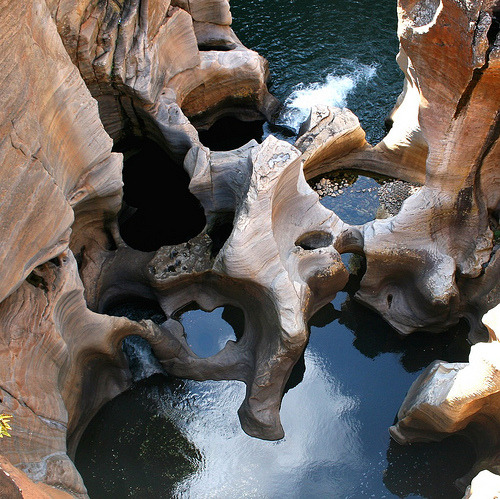 |
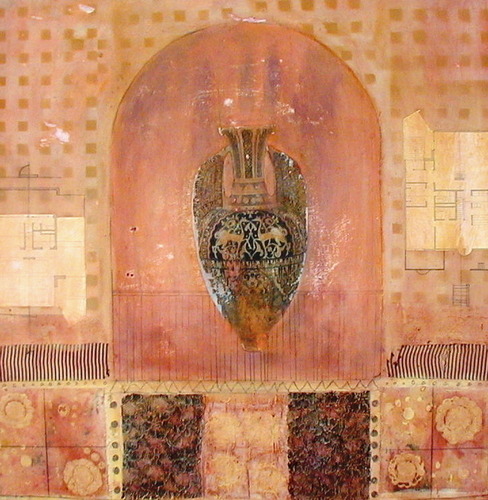 |
| “Silent Alcove” (Original Art from M. Lehrer-Plansky))
cobaltika: Also go to the wonderful Maryanne's blog - blue sky dreaming
|
 |
| Spenser Wilton: |
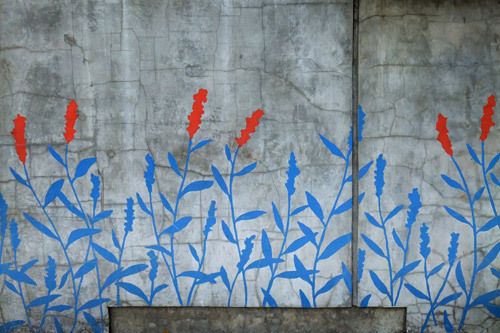 |
| Field notes (flora & fauna) from the urban jungle « sakurasnow
dear-ada: Sakura Snow blog - hello Suzanne!
|
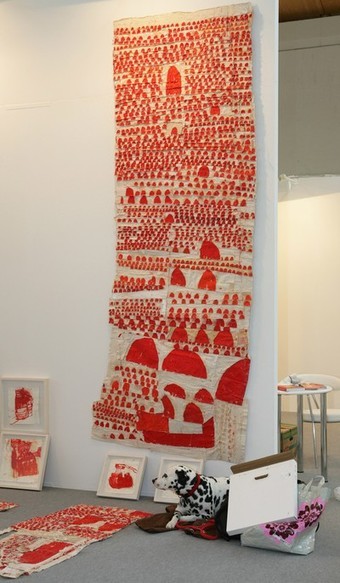 |
| Sati Zech leslieavonmiller: |
 |
| Voynich’s manuscript …garden journal’s are a beautiful thing! |
From Iran I liked the work of this artist very much:
 |
| Meem Art Gallery |
About Meem
Overview
Since its launch in 2007, Meem Gallery has established itself as a leading specialist in the Arab and Iranian art world. The gallery's aim is to promote the work of modern and contemporary Middle Eastern artists, and inspire viewers to engage with, and gain a deeper appreciation for, the art of this region. Meem's strength lies in its unparalleled access to both private and public collections of the world's leading artists. In its first year, the gallery distinguished itself by gaining exclusive representation rights in Dubai for the work of Ali Omar Ermes and Nja Mahdaoui, bringing their art to the Emirates for the first time. Other prominent artists exhibited at Meem include Dia Al-Azzawi, pioneer of modern Arab art; eminent sculptor, Parviz Tanavoli; internationally acclaimed filmmaker and photographer Abbas Kiarostami; leading Turkish artist Ismail Acar; respected Gulf artist Abdullah Al-Muharraqi; and the rising star of the contemporary Arab art world, Hamza Bounoua
I was trawling tumbleword when I came across hanaa-malallah whose website revealed much food for thought!
 |
| Hanaa Malallah |
 |
| Hanaa Malallah |
 |
| Hanaa Malallah |

 |
| Hanaa Malallah Shroud 2 2010 Folded burned canvas and mixed media on canvas 150 x 150 cm |
Hanna Malallah (b. Thee Qar, 1958) received a Diploma in Graphic Art from the Institute of Fine Arts, Baghdad in 1979, followed by a BA in Painting from the Academy of Fine Arts, Baghdad in 1988 and an MA in Painting from Baghdad University in 2000. In 2005, Malallah completed her PhD in the Philosophy of Painting, at Baghdad University, where she wrote her thesis on Logic Order In Ancient Mesopotamian Painting. She also holds a Postgraduate Certificate in Islamic and Modern Art from SOAS, London.
She has held numerous solo exhibitions including Schedules and Signals, Athar Gallery, Baghdad, Iraq, 1998; Anda Gallery, Amman, Jordan, 2002 and 2005; and Vivid Ruins, The Mosaic Rooms, Qattan Foundation, London, 2009. International group exhibitions include Contemporary Iraqi Art, Institute du Monde Arabe, Paris, 2000; Baghdad International Festival for Contemporary Art, 2002; Iraq's Past Speaks to the Present, British Museum, London, 2008-09. She has several awards including Prize of Arab Organisation of Education, Culture & Sciences, 1984-85, First Prize in Painting, Eighth Festival of Al-Wasiti, 1991, and Honorary Award, South Lebanese Cultural Council, 2002. Her work is held in collections at the Centre for Art, Baghdad, Royal Jordanian Museum, Amman, and British Museum, London. She lives and works in London.
 |
| Hanna Malallah |
Certain Knowledge (back)
(detail) 2010
Needlework and mixed media on canvas
150 x 150 cm
(detail) 2010
Needlework and mixed media on canvas
150 x 150 cm
 |
| Shroud 3 (detail) 2010 Folded burned canvas and mixed media on canvas 200 x 200 cm |
I have posted here below the full 'artist's statement' from her website and suggest, if time permits, you read it for the acutely poignant way it speaks to the history of her country of origin, long past and recent past.
I found this intensely interesting reading... I'm always drawn to think about what it means to be born to a certain geography, time and atmosphere ... and how people work with what is presented to them that may or may not be possible to overcome... at least in the short term.
My contributions to this exhibition are the result of my art practice since the early 1990s and also represent a point of transition towards the inclusion of figurative ‘similes’ as part of my ongoing quest for knowledge in the heart of abstract systems.
I began researching abstract systems (geometry, numbers, mathematics, letters, religion and art, for example) during a year and a half of seclusion in my studio on the first floor of my parents’ home after an intense materials and practice oriented painting degree from the Academy in Baghdad. Iraq was barely recovering from eight years of war with Iran whilst getting ready for armed engagement with Kuwait leading to the disastrous 1991 Gulf War and years of sanctions. At the same time, Shaker Hassan al Said, one of Iraq’s great artists and teachers, was refocusing the gaze of an entire generation of local artists towards the Mesopotamian past enshrined in the phenomenal collection of artefacts housed in our National Archaeological Museum.
Viewed as ‘modern’, these objects – many of them marked, or ’ruined’, by the passage of time – informed the aesthetic direction characteristic of the Eighties Generation. We deemed traditional art materials as incapable of delivering our artistic message. Instead we worked with burnt paper and cloths, with barbed wire and bullets, with splintered wood and found objects, borrowing from history and our catastrophic present alike. For many of us, this ‘Ruins Technique’ became the visual signifier of our cultural resistance and a carrier of our identity as Iraqi artists.
We also challenged received art terms and invented new ones. For example, in 1991 I recreated a three meter long segment of the ancient Al Warkaa temple wall with clay and cement on wood depicting ancient geometric symbols. In western art historical terms, where abstraction is defined either as non-representation or as the conversion of observed reality into patterns independent from the original source, the work can easily be considered abstract art. In my practice, however, the original source is an essential element of the composition process. I have thus coined the expression: ‘significant abstract’, meaning that the aesthetic aim has to reflect the original source in the very material presence of the art work. The spiritual quality of this perspective has become increasingly important to my practice.
As sanctions continued throughout the 1990s and art supplies became sparse, necessity rather than rebellion forced us to increasingly utilize found objects, recalling perhaps the Dada movement in Zurich at the time of the First World War. In 1999, as part of an exhibition called Icons of the Environment, I showed a work composed entirely of an accumulation of things picked from the streets of Baghdad, one each day, and pressing it into the surface of the work. This accumulation of signs became a document, a diary of daily life. Movable red squares allowed for audience interaction, signifying the playing of futile political games generating a vast amount of new ruins whilst simultaneously referencing our ancient Royal Game of Ur.
This kind of work led me to formulate a theory which postulates that if any image (figurative or abstract) is distilled to its rudimentary components, the result can only be abstraction. Therefore, all representations must, ultimately be considered a collection of abstract symbolic systems. These systems have their origins in our first global civilization, Mesopotamia, and are consequently embedded in all subsequent –global- systems. For many years, I have negotiated my practice on the intersection of these systems. I also agree with my philosophical mentor, Wittgenstein, who states in his Theory of Symbols that we create pictures of facts which serve as our models of reality, and that representation must share a logical form with the fact.
My immediate reality changed four and a half years ago when I left Iraq, and though I still burn and tear canvas and cloth, my work increasingly focuses on two vast fields of thought: religion and art. In testing the veracity of art’s spiritual roots as well as the limits of abstraction, I seek knowledge in the space between abstraction and figuration. The representation of the Hoopoe, the iconic leader of the Attar’s avian seekers, in his epic ‘Conference of the Birds’, for example, serves as a simulation of reality, which in itself is a simulation of perfection. Many of my works assimilate the idea of the hidden and the process of emergence based on awe of the unknown and the notion of transformation in the promise of the Secret.
Hanaa Malallah
London in 10/06/2010
 |
| Shroud 2 (detail) 2010 Folded burned canvas and mixed media on canvas 150 x 150 cm |
I know I have posted on this before ...but a favourite piece from the ancient world is this decorated box below.
The Standard of Ur (also known as the "Battle Standard of Ur," or the "Royal Standard of Ur") is a Sumerian artifact excavated from what had been the Royal Cemetery in the ancient city of Ur (located in modern-day Iraq south of Baghdad). ...Wiki -
The two mosaics have been dubbed "War" and "Peace" for their subject matter, respectively a representation of a military campaign and scenes from a banquet
 |
| © Trustees of the British Museum |
 |
| Banquet scenes such as this are common on cylinder seals of the period, such as on the seal of the ‘Queen’ Pu-abi, also in the British Museum. The Standard of Ur – The British Museum |
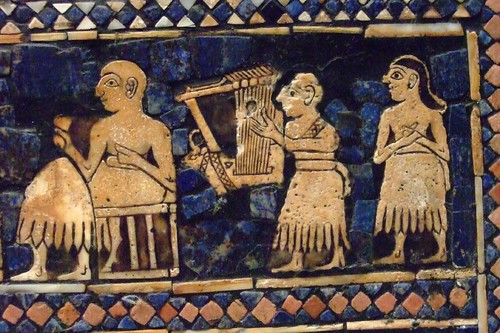 |
The Standard of Ur is actually a hollow box decorated with mosaics oflapus lazuli red limestone and shell set in bitumen Sumerian 26th century BCE (2) |
This is a rather long post ...but its been a while since I really had time to blog leisurely and so I have enjoyed taking time out to spin some visual threads and simply enjoy the process.
Have tried to pop in and say hello to the lovely bloggers who take the time to visit here...and to notice new followers coming along!
Its been ages since I spring-cleaned my blog roll...there are people I wish to add... please forgive the neglect... hugs all!
Sx
Have tried to pop in and say hello to the lovely bloggers who take the time to visit here...and to notice new followers coming along!
Its been ages since I spring-cleaned my blog roll...there are people I wish to add... please forgive the neglect... hugs all!
Sx

8 comments:
I really dig your finds! Thank you for such diligent excavating.
I was sitting here with my morning coffee, enjoying your post thoroughly. Such beautiful, thoughtful, color-full work from artist after artist.
Then I found the Hanaa Malallah piece. THANK YOU. If I tried to tell you what this means to me, my comment would need to expand to book length. Your posting of her work and her artist statement has shaken my personal world in a profound way. Thank you for this gift.
FABulous stuff as always Sophie! I am cadging the wire "drawings" for a later date and adored the Olley posts.
So disappointed, I will be in England soon again, but not when you'll be there. Still, v. excited for you.
xoxo
I felt compelled to post this Sharon... first the curious range of pieces ... then the really poignant work of Hanaa Malalla. For me it's easy to end up focusing on North America and Western Europe (as well as Aust and NZ) because they are a lot of blogger's paths being crossed between us all!
London is always such an amazing cross-roads for a far broader field of people from everywhere...so I'm not surprised the artist is possibly based there it now.
I'm glad you came by indeed!
S
Oh... how absolutely disappointing we cant spend time in some garden or gallery over there nattering away Mlle P!
You can tell me what's on... JOKE...in city as dense as London?
But ...the highlights maybe?
xox
The perfect post for mulling over while sipping my first cuppa of the day. Thanks Sophie!Wonderful news about your trip!
wonderful finds Sophie! I haven't had a chance to stop in on Tumlr in a while. sigh... busy busy run run run! I have seen some of these before but, you always manage to find some nice surprises. Nicely curated lady!
xo
That was lovely!! Such a nice collection of images and ideas. I was just getting ready to post about Michael Zelehoski too. I was so happy to see it again, after seeing it at Art Propelled.
Thank you!
Sophie, this is just so inspiring, and between you and Robyn... whenever I need inspiration, I know where to go! thanks for this dear one... xo
Hi Sophie - really like some of the artworks sourced by you in this post. It reminded me also that I now have a shop in which I can create window displays - how exciting! thanks so much xxx
Post a Comment